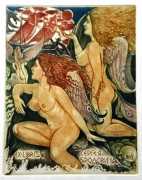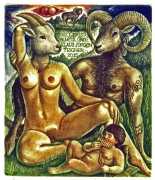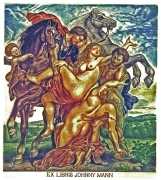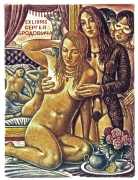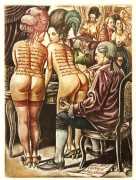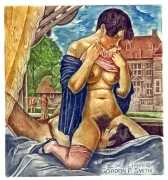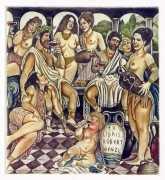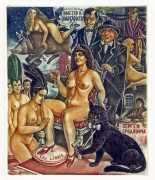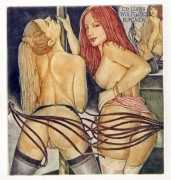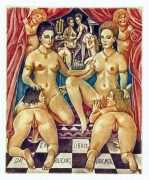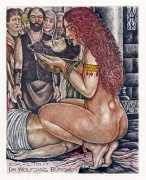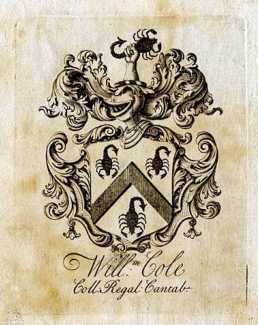
The first known bookplates or ex libris – a Latin phrase meaning ‘from the library of’ – are woodcuts from the fifteenth century, displaying the owner’s name and coat of arms. Through the centuries ex libris designers came up with ever more artful and imaginative designs for their clients’ libraries, inspiring a mania for collecting bookplates which lasted from the final quarter of the nineteenth century until the 1930s.
Today ex libris are once again in demand, eagerly sought by specialised collectors, and there are websites, fairs and exhibitions dedicated to the artform. Many plates are now produced as signed and numbered small format fine art prints, known as ‘free’ ex libris, never intended to be glued inside books but instead to be framed and displayed in the library of the client fortunate enough to be able to afford to commission it.
In recent years there has been a definite trend towards erotic subjects for bookplates, partly a throwback to the 1920s and 30s and partly to explore the potential of engraving techniques; it seems a pity that the high-quality results do not extend to more book illustration.
Serge Kirnitskiy’s skill is in taking a client’s brief and producing a beautiful, balanced, well-observed work of art, combining his engraving expertise, colour sense and imagination, at the same time recognising his place in the long-established history of the ex libris.


